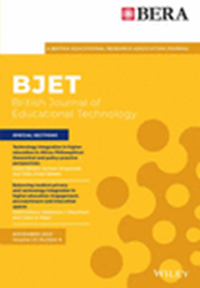How to train students to engage in text-picture integration for multimedia lessons
Abstract
This study investigated the effectiveness of visual training or verbal training on how to use a text-picture processing strategy for learning from computer-based multimedia instructional material. Sixty-nine university students were randomly assigned to the verbal training group (students received text-based instruction for a text-picture processing strategy), the visual training group (students observed a video depicting an expert's eye fixations while using a text-picture processing strategy for an initial portion of a multimedia lesson) or the control group (students did not receive any instruction). During reading a multimedia lesson on biology, students' eye movements were tracked; and after the lesson, students took a posttest. Concerning learning outcomes, both visual and verbal training helped students perform better than the control group on a recall test and the verbal training group perform better on a transfer test. Concerning learning processes, both visual and verbal training caused students to attend less to on-screen text and more to on-screen pictures as compared to the control group. Mediation analysis showed that increased attention to pictures was a mediator for better learning outcomes. Practical and theoretical implications are discussed.
Practitioner notes
What is already known about this topic
- Pre-training on key concepts or terms improves learning, but little is known whether and how pre-training on strategy acquisition supports learning.
- Mayer's multimedia principle suggests people learn better from illustrated text than from text alone; however, learners sometimes fail to integrate text and picture.
What this paper adds
- Pre-training on text-picture processing strategy is effective.
- Verbal and visual training foster text-picture processing strategy acquisition.
- Verbal training improves both recall and transfer test performance, and visual training improves only recall test performance.
- Verbal training is better in improving outcomes.
- Fixation time on pictures mediates the effects of training on learning outcomes.
Implications for practice and/or policy
- Pre-training should be used to support learners' strategy acquisition.
- This study also provides suggestions on how to design pre-training on strategy acquisition.

 求助内容:
求助内容: 应助结果提醒方式:
应助结果提醒方式:


